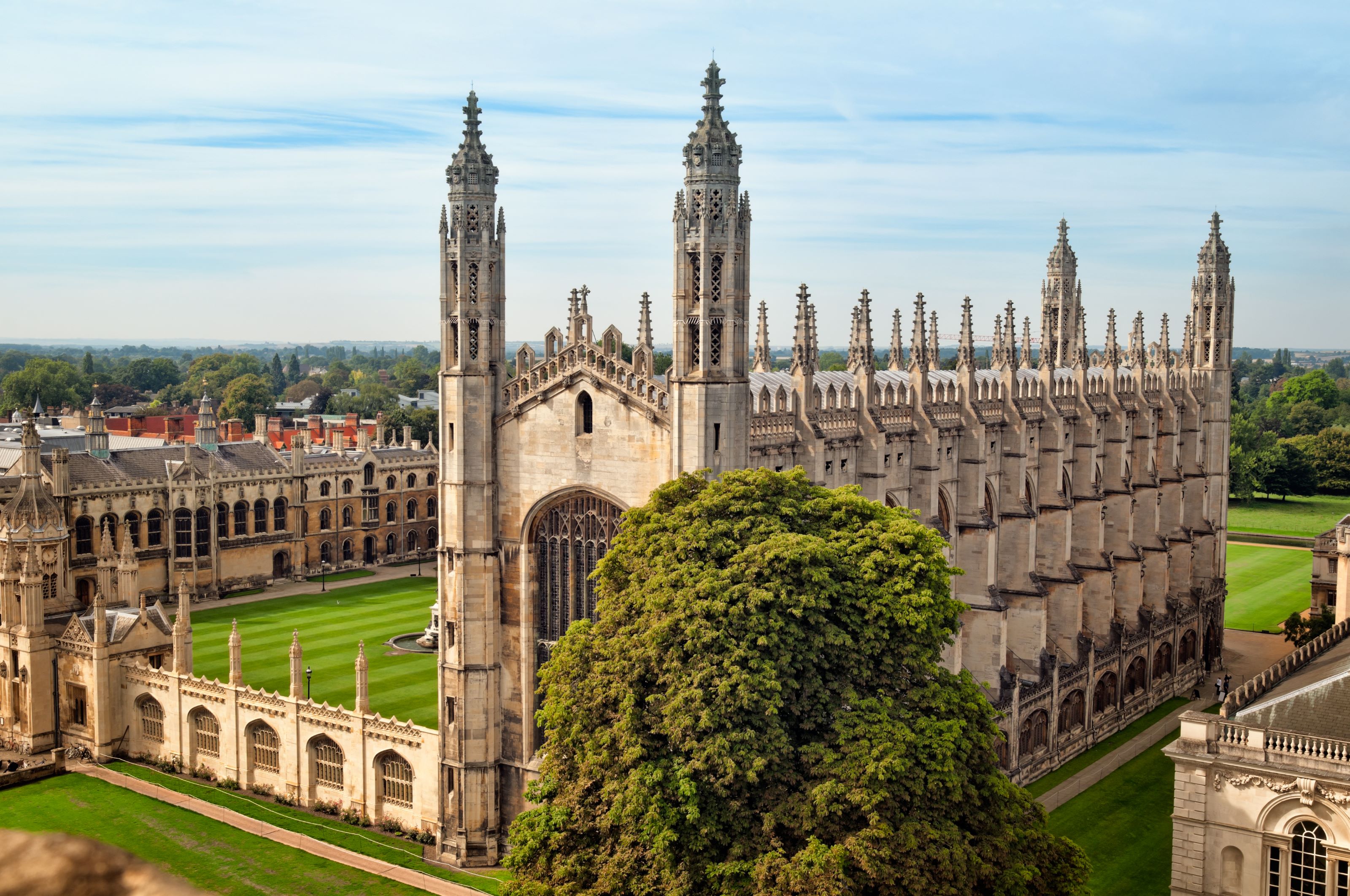Cambridge University adds nearly 500 solar panels to King's College Chapel
Preservationists argue that the panels damage the historical integrity of the chapel whilst its supporters claim the work demonstrates a commitment towards meeting net zero

Solar panels installed onto the 15th-century roof of King's College Chapel has prompted a debate around the preservation of England's historic buildings.
The installation of 497 solar panels onto the Cambridge Chapel is said to be a commitment towards a self-sustainable future and to meeting net zero goals.
However, others have claimed the work is another example of England's heritage buildings being damaged to promote sustainable energy.
Building's energy needs met by the solar panels
Nearly 500 solar PV (photovoltaic) panels have been installed on the roof of King's College Chapel.
It is hoped the panels will reduce the energy consumption of the chapel by 1.4%, generating 123,000 kilowatt hours of energy per year, meaning the chapel's energy needs will solely be provided by the panels.
Shane Alexander, the project manager for the installation, explained that the solar panel works coincided with replacing the Chapel's old lead roof, which was no longer waterproof. The roof restoration began in September 2022, and the solar upgrade work started in March.
This initiative, it is claimed, shows the college's commitment to preserving history while embracing eco-friendly practices, and follows the trend of historic buildings in England installing solar panels.
Get the Homebuilding & Renovating Newsletter
Bring your dream home to life with expert advice, how to guides and design inspiration. Sign up for our newsletter and get two free tickets to a Homebuilding & Renovating Show near you.
Application stated the visual impact would be 'minimal'
Thrilled to reveal the first photovoltaic panels installed on the roof of the Chapel and to celebrate that we are near the end of a year-long conservation project that will hopefully inspire others to go greener. 👇Find out more at https://t.co/vD4pI0RtTK pic.twitter.com/RIPCpRwYbyNovember 29, 2023
The work required planning permission rather than listed building consent for the Grade-I listed building as the chapel operates under Ecclesiastical Exemption, meaning it is exempt.
In the application form representatives of the College highlighted that the solar panels would not be permanent and could be removed without damage if technology advancements meant they were no longer needed.
It was claimed that the panels would not be visible from the west side view of the building and that test panels that were installed were almost unnoticeable to members of the public.
They stated: “In the context of the climate emergency we consider the very minimal visual impact caused by the panels to be insignificant compared to the benefits.
“The Chapel is part of a wider strategy. While each element has not been large, the impact of the whole is significant.
“This site is important to the strategy, there is no other surface in the area, the entire college grounds, that could deliver the electricity output of the proposed panels on the Chapel roof.”
Objectors argued 'preservation without compromise'
A range of objections were received by the council concerning the application.
Despite Historic England recently giving the green light for solar panels on listed buildings the public body that helps protect England's historic buildings said the solar panels would “harm people’s appreciation of the Chapel’s extraordinary architectural character”.
Additionally, two third-party representations were submitted expressing concerns. The key points of contention included:
- King’s College Chapel's significance as one of the most important historic buildings globally.
- Its prominent status in the Cambridge Conservation Area.
- Encouragement for sustainable technology, but with a condition that public benefits should clearly outweigh negative impacts.
- The argument that there are alternative, less damaging locations for the proposed installations.
- Concerns about the visibility and potential harm caused by the black reflective panel arrays, impacting the building, its setting, and the wider context.
- The objection to the aesthetic impact of fitting new black reflective panels onto the historic lead roof, diminishing the integrity and perception of the unique building.
- Emphasis on the sacred nature of King’s College Chapel, urging its preservation without compromise.
The conservation officers from the council raised objections as well, claiming: “The PV panels would effectively form a roof covering of different character and appearance than the lead roof and the visual differences would be apparent albeit in a limited way.
“The degree of harm to the Chapel’s significance would be modest, but given the building’s importance this harm has to be of concern.”
'This is not about saving money, it is about saving the world'

The committee councillors unanimously approved the application when it came to a vote claiming that the overall benefits of the scheme outweighed any potential harm.
Councillor Alex Collis emphasised their collective commitment to a net zero carbon future, highlighting the city council's call for other organisations and institutions to contribute, noting that the approved plans align with this goal.
Councillor Martin Smart said: “We have extreme weather events around us all the time, this is not about saving money, it is about saving carbon, about saving the world.
“We talked some time ago in Cambridge City Council about the carbon we can save as a council as it was a small percentage of the total carbon in the city, but it is still worth doing it."
Third-party representation was also received in support of the application stating: "As is well known by any regular visitor to the college, and as shown on the photographs, the roof is barely visible from the grounds or most other angles.
"There is limited visual impact. I am aware the college has made significant efforts to date on sustainability grounds, e.g. new buildings being constructed to Passivhaus standards, and so this change is in line with an overall program of activity.
"Similar installations have appeared elsewhere, e.g. Salisbury Cathedral, so this change is not without reasonable precedent."

News Editor Joseph has previously written for Today’s Media and Chambers & Partners, focusing on news for conveyancers and industry professionals. Joseph has just started his own self build project, building his own home on his family’s farm with planning permission for a timber frame, three-bedroom house in a one-acre field. The foundation work has already begun and he hopes to have the home built in the next year. Prior to this he renovated his family's home as well as doing several DIY projects, including installing a shower, building sheds, and livestock fences and shelters for the farm’s animals. Outside of homebuilding, Joseph loves rugby and has written for Rugby World, the world’s largest rugby magazine.
